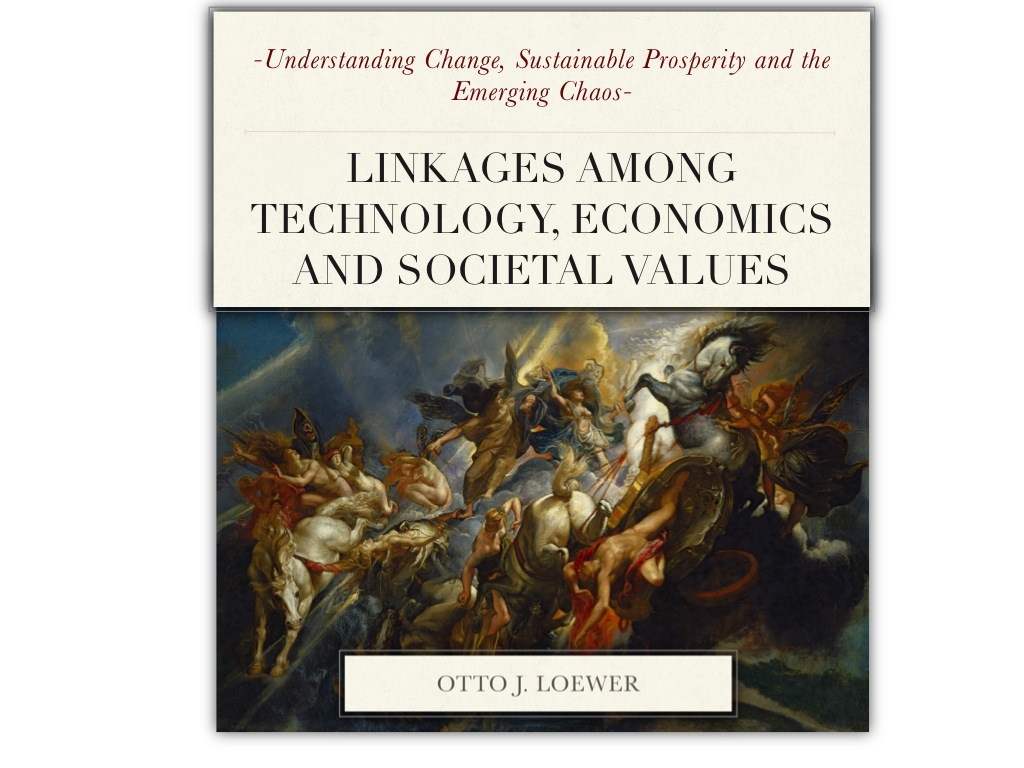ABOUT: Ordering the Electronic Textbook used in Workshops and BENG/OMGT 5633 “Linkages” course
AVAILABILITY:
As of August 29, 2012 (with limited updates thereafter) the electronic book entitled “Linkages Among Technology, Economics and Societal Values” by Otto J. Loewer [as used by the Instructor in workshops and as the BENG/OMGT 5633 class text] may be purchased through Apple’s IBook store. This is a more fully featured electronic version of the text than the pdf version that is offered free to those enrolled in BENG/OMGT 5633.
[NOTE: The three major section covers and an abbreviated Table of Contents are shown at the bottom of this page.]
This electronic text was developed through Apple’s IBook Author multi-touch screen software for the IPad/IPhone reader. One goal of IBook Author is to promote inexpensive electronic textbooks (present price for this text is $4.99).
The book in its entirety, or a free sample of the electronic text (which includes Chapter 1) may be downloaded for your inspection through the IBooks app on an IPad/IPhone (search by author name or by the book title) or through the link below.
DOWNLOADING to IPAD/IPhone
To download either the book in its entirety or a sample chapter to an IPAD/IPhone via the Apple IBookstore, click on the following link:
https://itunes.apple.com/us/book/linkages-among-technology/id548532106?mt=13
UPDATES AND REVISIONS:
The text may be revised during the term or semester when typos or similar errors are brought to the attention of the author. However, the latest major revision regarding statistical data and historical tables was completed in early 2012.
THE NEED FOR THE TEXT:
Today’s reality is that change is occurring at an increasing rate and this is threatening humankind’s quest for sustainable prosperity and wellbeing. Clearly, developing and implementing solutions for progressively more complex problems will become ever more difficult in the face of relentless and increasingly rapid change. To be successful, those with differing backgrounds, expertise, experiences and perspectives from all types of organizations must have the ability to communicate effectively using factual information. And, this will take enlightened leadership with special skills, knowledge and insight.
INTENDED AUDIENCE:
The text is written for three categories of users who wish to employ its content as a primary or secondary source of information about how the forces that drive change are impacting sustainable prosperity and wellbeing:
- Faculty and students teaching or enrolled in formal survey or interdisciplinary courses in areas such as business, economics, engineering, agriculture, sociology, history, environmental studies and public policy.
- Consultants to business, technology and non-profit organizations who wish to use the material in workshops, seminars and other types of presentations.
- Leaders of public and private organizations who wish to enhance their individual knowledge and understanding as part of their professional responsibilities.
This text is especially useful for those at every organizational level who aspire to become more enlightened leaders with the following proficiencies:
- A fundamental awareness of the historical, economic and demographic data-driven indicators of overriding trends that point to an emerging chaos (text data comprised of approximately 400 graphs and 9,800 events over recorded history).
- An ability to communicate effectively and knowledgeably about how macro-level change and resulting sustainability are being driven by the spiraling relationships among technology, economics and societal values.
Click on any of the following figures if you wish some additional detail about the contents of this book:







